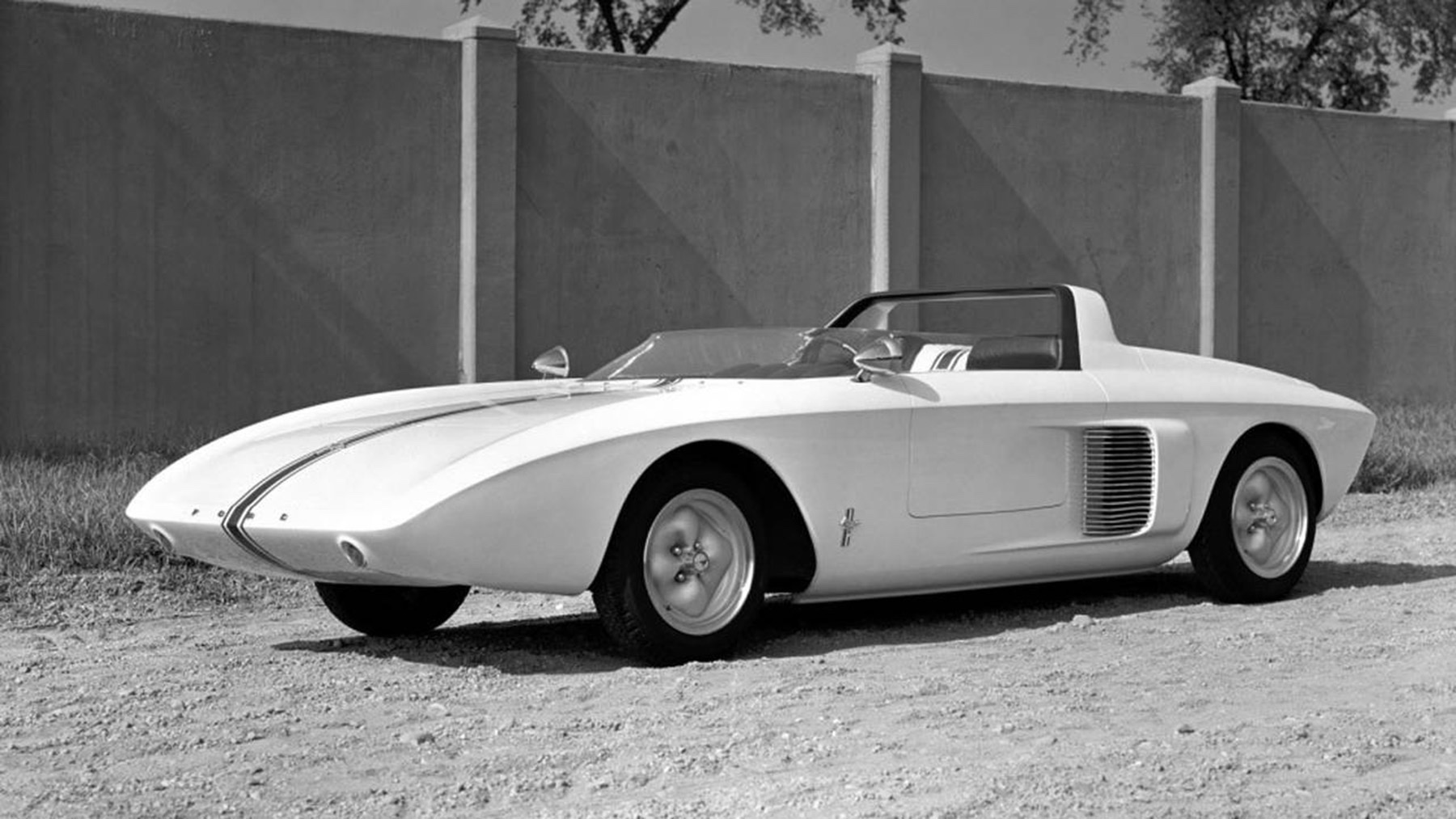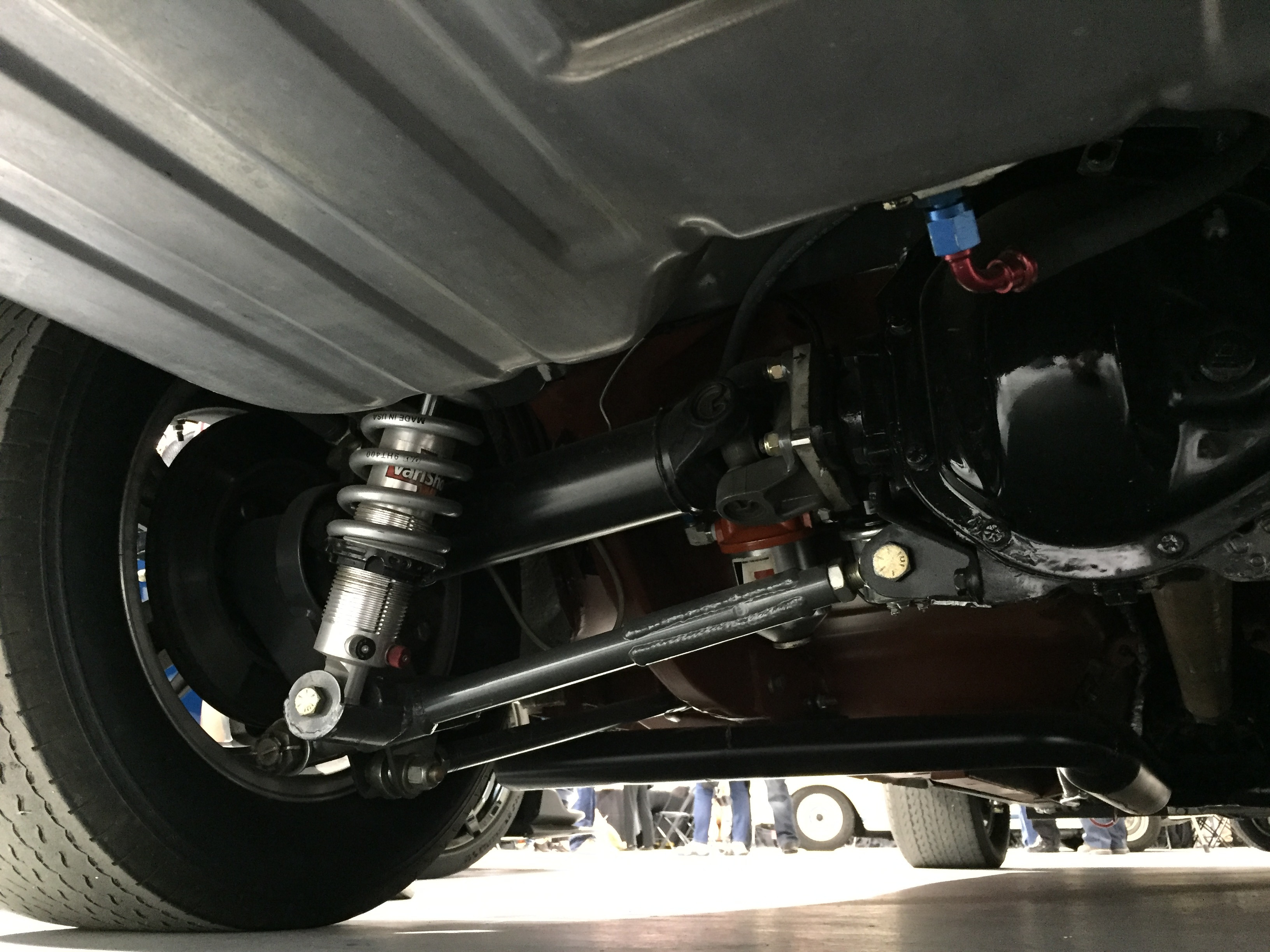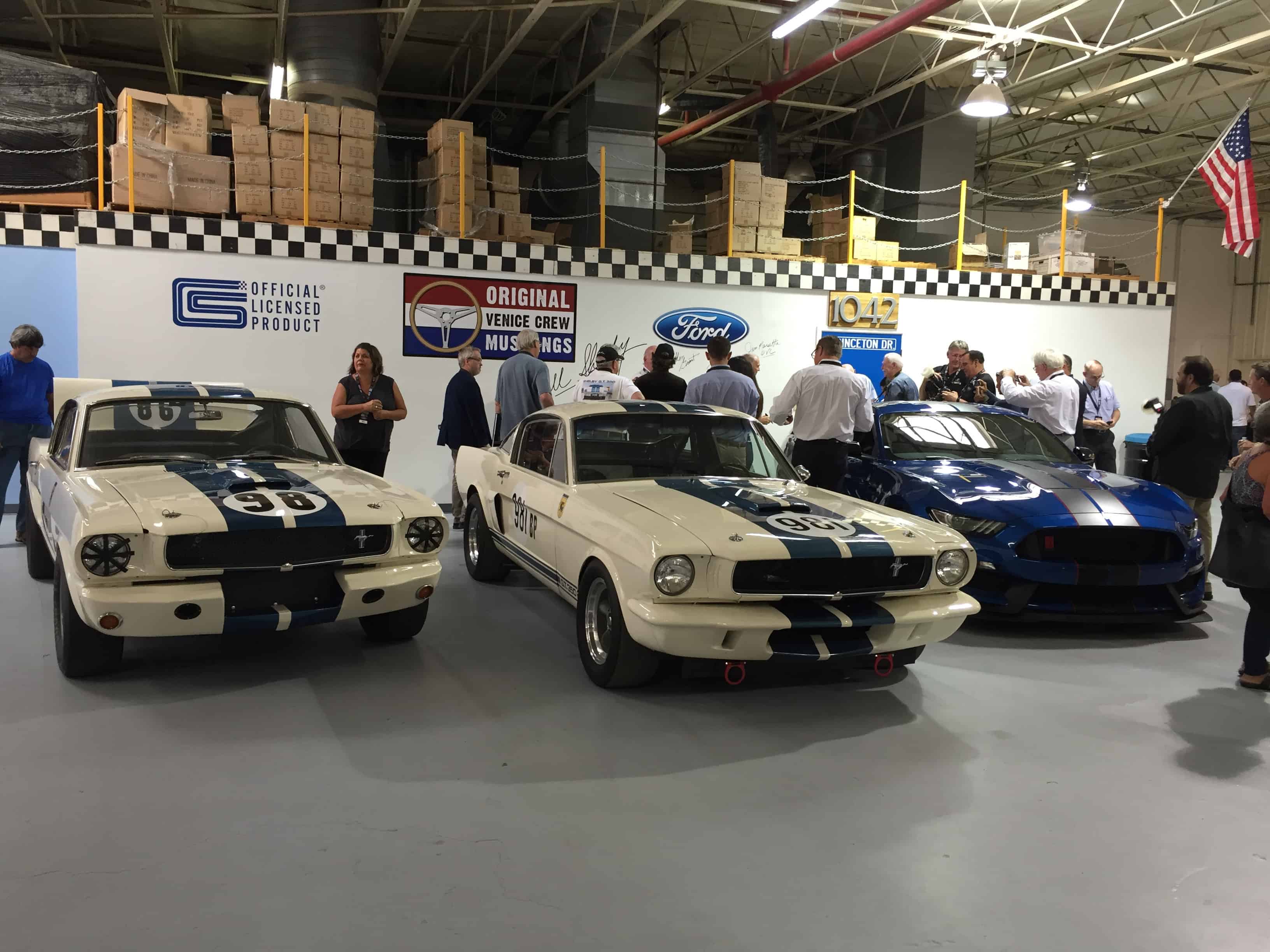
On a gray October morning during the weekend of the 1962 U.S. Grand Prix at Watkins Glen, New York, Dan Gurney nearly matched the lap times the 1.5-liter F1 cars in a tiny Ford roadster with a 1.5-liter V4 mounted behind the seats—an unforgettable racetrack introduction for the name “Mustang.”
It certainly was an auspicious beginning for a name that was never expected to see production; never mind to represent a 4-seat sports car that would quickly intoxicate car enthusiasts across the planet.
On April 17, 1964, Ford’s “Special Falcon” broke cover and changed the American automotive landscape. Almost exactly a year later, an SCCA B-Production program called “Cobra Mustang,” with Ken Miles, development driver and SCCA champion, wrote the prelude to a legend at Green Valley Raceway in Texas. Under the Carroll Shelby team, it became the G.T. 350—and soon the Shelby GT350.

The first three Shelby Ford Mustang serial numbers were 5S001, 5S002, 5S003. The cars planned for racing had 5R001 and 5R002 written on their firewalls in red marker. The 1965 SCCA B-Production champion was later tagged as SFM5R001 and other “R” car became the development “mule” and was tagged SFM5R002. The first car was renumbered SFM5S003 when it became the prototype for the street version GT350.
And now, with the fire of competitive passion that drove the Shelby American shop’s meritocracy to an international championship, three of the original “Venice Crew” have conspired to recreate the car Ken Miles used to win the GT350’s first race.
But wait, there’s more! As development continued through 1965, a design proposal for independent rear suspension was put into engineering drawings. When races are being won with an inexpensive live axle, why go to the expense of creating all the components that go into a sophisticated, adjustable independent suspension system?
And they did not. The drawings went into the archive and competition history was written without the update — until 2017.

Peter Brock, Jim Marietta and Ted Sutton came together 50 years later to build a GT350 just the way they would have 50 years ago had they been allowed the time and money to develop it the way they wanted.
The Original Venice Crew Mustang GT350Ri project began with the same basic High-Performance 1965 Mustang equipped with a 281-horsepower 289cid V8 and a Borg Warner 4-speed gearbox. However, a diligent search discovered the original independent rear suspension drawings in the Ford archives.
Beginning with only original 1965 K-Code 2+2 Mustangs, the crew worked in the Shelby Gardena facility for all fabrication and assembly. Testing and development (read: geometry, spring rates, ride height and damping) of the Independent Rear Suspension GT350Ri was done on multiple U.S. tracks with Shelby stalwarts Rick Titus (Jerry Titus’s son), Jay Dalton, Ryan Croke, Randy Richardson, John Morton and the OVC Mustangs founders — Brock, Marietta and Sutton.
The finished cars are as good as expected. They qualify as SCCA B-Production entrants or as vintage racers with some of the vintage organizations. There will be 36 of them, turn-key and ready-to-race GT350Ri coupes constructed.
You can have one for $250,000 — unless they have all been sold before this is posted.





